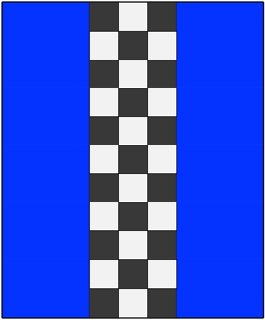On my ender 3 I have to turn the knobs on the bottom for leveling.
I just picked up a Bambu Lab P1S and it doesn’t.
Fundamentally, what is different that allows the P1S and other printers to get away without it?
deleted by creator
I’m still using an almost 10 year old printer. I do this any time I have to make adjustments. And it’s with a fucking allen wrench. Such a pain in the ass.
Monoprice mini v2
Printing on glass, using tape or hairspray to help with adhesion… I’d print a skirt with a couple lines so I could level the bed a bit before the actual print started.
Man hardware has come a long way.
The Bambu will have some sort of auto bed leveling. The simplest method is a limit switch connected to a small plunger style probe mounted next to the nozzle.
Whatever the specific method, the idea is something that lets the printer sample multiple points on the bed and use the Z axis dynamically to adjust for the small irregularities. If you don’t have that, even half a millimeter can ruin print quality, so the leveling screws are there to handle it manually from the bed side.
I had the ender 3 S1 with a cr touch though, why the need for both in that case?
I’m pretty sure the original version of that printer didn’t come stock with the CR Touch. So rather than redesign and manufacturer all new boards they just kept the same one.
Also, I have a BLTouch on my printer (same thing different name), and while it’s pretty good, it isn’t perfect, and I do have to manually adjust the bed a tiny bit here and there. My guess is, cheaper printers like the ender and my neptune that are designed with adjustable beds in mind are prone to the bed being thrown off balance, whereas nicer printers like your new bambu are more robust in that the bed is supported well enough to not get thrown off.
also, the springs tend to go out of level, and it’s usually best practice with springs to level it manually and get it close enough first, then use the ABL to correct for the horrendous dip in creality printer beds.
I think some people do take them off if they have CRTouch and decent spacers, but the wheels still work as nuts, and then, neither CRTouch nor an Ender style bed is perfect, so if something is real wonky it can be good to make a few adjustments before probing. The Bambu was likely designed with ABL in mind, and at the price they’re charging I’d also expect a little more fit and finish, LOL.
That’s odd, I upgraded my ender 3 with bed leveling and removed the knobs to mount it fixed, because the damn knobs keep moving and then you have to redo the bed calibration. To be honest I can imagine one reason might be that a loosely mounted bed gives you more fault tolerance against the nozzle being too low. I put my bed on two parallel linear rollers for more rigidity, and combined with dual z screws the nozzle has no chance anymore to produce any sort of first layer when it is slightly too low. That made me realize just how much the stock ender 3 is flopping around, but also how this can give you mostly okayish results most of the time without having to deal with a ton of small tolerances.
I had no idea that was an option, maybe that would have made my experience a little better
The knobs get you “close enough” and then the touch probe accounts for the rest. You wouldn’t want your extruder to have to move up and down 1mm for each layer if it was really far off.
BambuLab wants to be the Apple of 3D-printing. So they simplified and decided the factory bed level with auto bed leveling/compensation is good enough for the user.
On high end printers there is just no need to level them. The factory does it and the bed won’t move at all due to the excellent mechanical designs.
Everything else? They have it to level the corners of the bed and use automatic bed leveling/correction to get it perfect and adjust for build plate imperfections.
There is one system that does level the bed but doesn’t need the knobs as each of the three mounting points is connected to an independent z-axis (kinematic bed): https://www.youtube.com/watch?v=bgkK7Fez8VU
Good comparison with Apple (no open source anything)
There are some differences on how locked down their (bambulab & apple) ecosystem is:
-
BambuLab talked with the X1plus guys and made changes to allow it (apple would never allow a jailbreak)
-
BambuLab talked with BTT/BIQU regarding the Panda touch The conclusion isn’t as fortunate.
-
BambuLab collaborated with E3D.
I know, I was an intern at E3D ^^
-
WebKit is open source 😅 so maybe Bamboo is a little worse in that regard.
WebKit is only open source because they forked KHTML to create it, which is licenced under LGPL
Hahaha fair enough😂😂
Here is an alternative Piped link(s):
https://www.piped.video/watch?v=bgkK7Fez8VU
Piped is a privacy-respecting open-source alternative frontend to YouTube.
I’m open-source; check me out at GitHub.
It’s worth noting that there are a few bed leveling methodologies:
- Full manual, such as the stock enders of yore
- “Automatic leveling” without a means of actually getting the bed in plane with the gantry. An ender with a touch sensor falls into this category. So does the X1 actually, since the three lead screws share a common z motor. As the bed gets out of plane with the gantry and/or your bed warps the printer will compensate. Ideally the bed and gantry are designed in such a way that they can’t become that out of plane (for example, the bed is fixed)
- “Automatic leveling” with a mechanical mechanism to get the gantry and bed in parallel planes. This is what Vorons, Rat Rig, etc do. They’ll also benefit from a bed mesh, since most beds aren’t perfectly flat
I can’t even get my Ender 3 level with the screws anymore.
Are you leveling your bed with the bed heated up?
Are they possibly over tightened? The screws can “warp” the bed if you over do it (learned that one the hard way)
I had this problem as well, though I fixed it by using a 3 knob bed rather than a 4 knob one.
Still have springs? Ditch them for silicone spacers.
HA! I also just went from an Ender 3 to a big boy K1C and I can tell you mine has 3 z-screws that it uses in conjunction with a pressure sensor on the nozzle so it knows EXACTLY where it is and can adjust each screw independently to level the bed. It’s fucking genius and it makes my ender look like a model T with a crank start, damn near literally.
So far I just hit print… And it prints
Totally unheard of on my Ender
Don’t the 3 lead screws share a single common motor? https://wiki.bambulab.com/en/x1/maintenance/replace-z-motor
My x1c still has nobs below for manual leveling?
I replaced the springs on my Ender 3 Pro with Bed Stiffeners when I added a CR Touch. There is no need to level the bed anymore
I don’t know the Bambu model, but I do have an ender 3 and a prusa mk4. The ender 3 out of the box doesn’t have an auto leveler, it is “dumb” and it assumes the level of the bed is correct (if you leveled it right it should be).
Other printers like the mk4 and I’m assuming the Bambu have auto levelers that sample the level of the plate over several points, and then remembers the height of these points. Because it remembers the heights, it can adjust for a bed that isn’t manually leveled, so there’s no need for knobs.
You can get this functionality for the ender with a bltouch. But you’ll have to enable it in the firmware and do some configuration and wiring. It’s not too hard.











